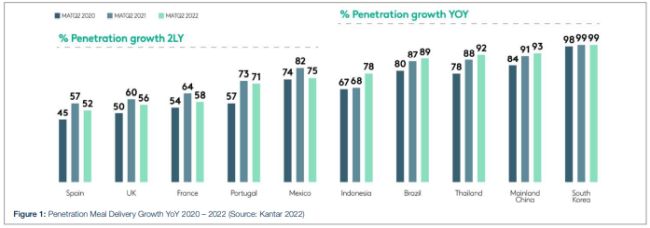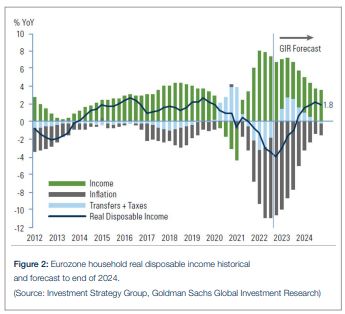Introduction
While it has overcome numerous difficulties in the past decade,
the restaurant industry requires careful navigation through
unchartered territory in 2023. Obvious hurdles include rising
interest rates, the cost-of-living crisis, staffing shortages,
country-specific industrial action, increasing energy costs, and of
course global inflation. So, what can business leaders do to manage
this?
The industry ended 2022 in a tough position. The UK saw a 64%
increase in restaurant closures in the 12 months to May last year,
and a 56% rise in insolvencies over the same period1 .
Governmental support such as VAT reductions across Europe and the
‘Eat Out to Help Out’ scheme in the UK gave short-term
lifelines but no substantial solutions.
Meanwhile, the inflation rate for restaurants across the
European Union was 9.6%, the highest figure reported since
20172 . This comes after 42,500 restaurants were
reported to have permanently closed in eight eurozone countries
between June and August of 20203 .
The varying restrictions on customer interactions caused by the
pandemic saw delivery platforms take advantage of this opportunity,
seeing unprecedented growth as restaurants sought new channels to
reach their audience. This further disrupted the market allowing
for some restaurants to stay solvent, or even grow top line
revenue, but at a big cost of margin. The delivery market is now an
established distribution channel for the industry, despite the
decline in penetration from 2021 levels in Europe4 (see figure
1).

In mid-2022 the UK restaurant investor Luke Johnson stated that
the industry was in for “two years of hell” and that the
cost-of-living crisis, rampant inflation, brands falling into
arrears with HMRC, landlords, and CBILS loans were creating a
“perfect storm” in the UK5 . The UK is not
alone in these pressures, with the war on Ukraine causing surges in
the price of food and energy, in addition to labour shortages and
supply chain issues across Europe resulting in a loss of sales for
restaurants in many countries.
Challenges to come in 2023
The cost-of-living crisis
is being felt in many countries, reducing
customers’ disposable income and driving down repeat visits;
with 53% of customers stating they will be decreasing spending into
2023. Restaurant spending fell by as much as 12% YoY by the end of
20226.
General inflation
in the UK is estimated to fall from 10.9% in Q4 2022
but remain high at 5.2% in Q4 of 20237 . In Europe,
there is a forecast it will decrease from 9.2% to 3.25% across the
same period8 . While an improvement on last year,
inflationary pressures will still impact the cost of goods and
services to a degree, posing restaurants with a decision of whether
to pass this on to the customer via price rises.
Energy costs
will likely require further government intervention
to support or will result in continued dramatic impact on
restaurants’ income statement. In London, restaurants are among
those facing the prospect of a rise of nearly £4,500 in
annual energy bills once government support is
withdrawn9.
Staffing shortages and wage inflation
will continue to be impacted as other industries will
be able to pay higher wages, luring talent away from the restaurant
industry.
Rising base rates
have increased interest costs significantly.
Operators facing a maturity date (or trying to agree an amendment)
are likely to find that refinancing takes significantly more
management bandwidth with much less certainty on the outcome.
Industrial action
s prevalent in many European countries across a variety of linked
sectors such as aviation, rail and fuel, resulting in disruption of
trade in many cities. This is expected to continue into 2023, with
several scheduled across sectors in various EU countries for the
first few months10.

Potential solutions and opportunities
Despite negative forces that are likely to continue to occur
during 2023, there are levers that can positively impact business
operations such as:
Revenue protection
- Control and manage no-shows with deposits and interactive
automated booking systems - Focus on customer retention by concentrating on existing
customers first before seeking potential new buyers
Execution and implementation
- Focus on minimised menus focused on quality over quantity
- Ensure simple and tight processes and controls that are clear
to all staff from restaurant team members to the board room - Hands-on focus to training and development of new staff
Product innovation and stabilisation
- Premiumisation and theatre vs extensive choice or replicable
offerings - Partnerships and dual-brand offerings promoting choice and
extending day-part trading
Cash is reality
Focus on simple and transparent cashflow forecasts on a weekly
basis
- Talk with suppliers on payment terms to manage working
capital - Protect capital reserves
- Utilise government support
Rightsizing
Account for all environment changes to ensure the balance
between site staff, management and head office is correct, as the
shift to an execution-led approach is adopted
Digital and technology
- Optimise all the omni-channels available to drive revenue with
a grip on margin - Technology integration between systems vs incompatible
isolation software - Map customer experience to fully utilise technology at all
interactions
Restructuring
- Consider consensual options to realign the fixed cost base,
address onerous leases or refinance unsustainable debt
structures
The progression through these challenges is likely to be slow
during 2023 with the optimistic grass shoots appearing in the
second half of the year. But with continued uncertainties, the
winners will be those who have a clear focus on implementation and
consistent execution, developing stable foundations to best utilise
the growth phase of the future.

A&M: Leadership. Action. Results.SM
Our global, market leading Travel, Hospitality and Leisure
(“THL”) team understand the sector, influencing trends
and business situations that require deep expertise. Travel,
hospitality and leisure is facing new and legacy challenges across
the world associated with changes in the nature of demand, rising
operational costs, disruptive market entrants, and increasingly
complex financing environments.
We at A&M can provide practical guidance and help you
navigate the challenges your business is facing locally and
globally. As part of the A&M network, we draw on the travel,
hospitality and leisure expertise of colleagues across the globe.
We have a presence and local expertise in every market your
business may operate in.
Footnotes
2. EU-27: inflation rate of restaurants 2022 |
Statista
3. Over 42,500 Restaurants Have Permanently Closed
Due to COVID (chd-expert.com)
4. Restaurants rebound while food delivery becomes a
post-pandemic norm (kantar.com)
6. Spending slows in September due to cost-of-living
concerns | Barclaycard (home.barclaycard)
7. Monetary Policy Report – November 2022 | Bank of
England
8. Goldman Sachs no longer expects recession in euro
zone in 2023 | Reuters
The content of this article is intended to provide a general
guide to the subject matter. Specialist advice should be sought
about your specific circumstances.

